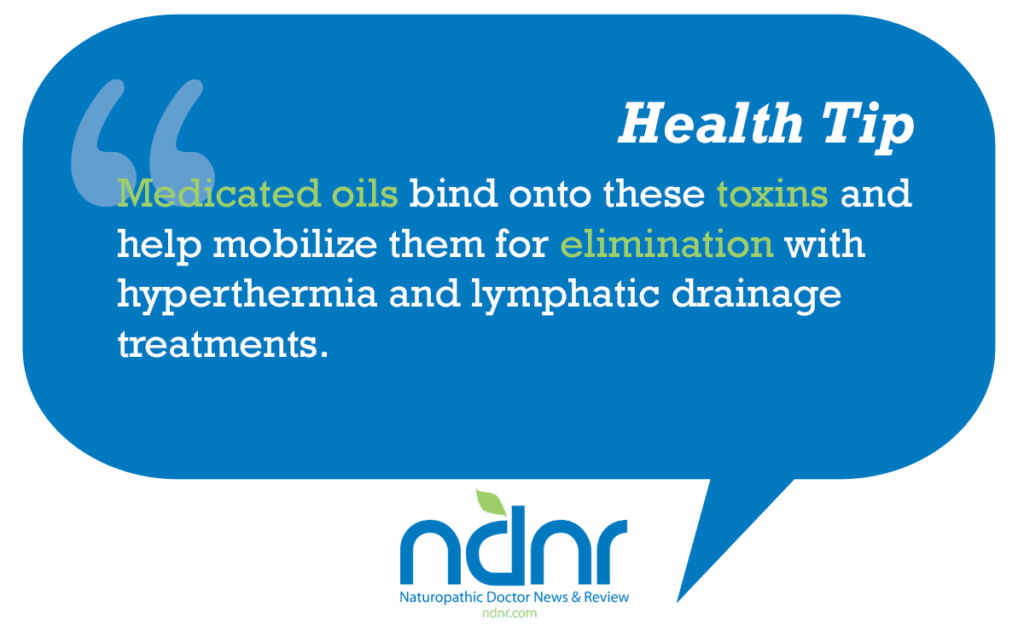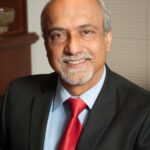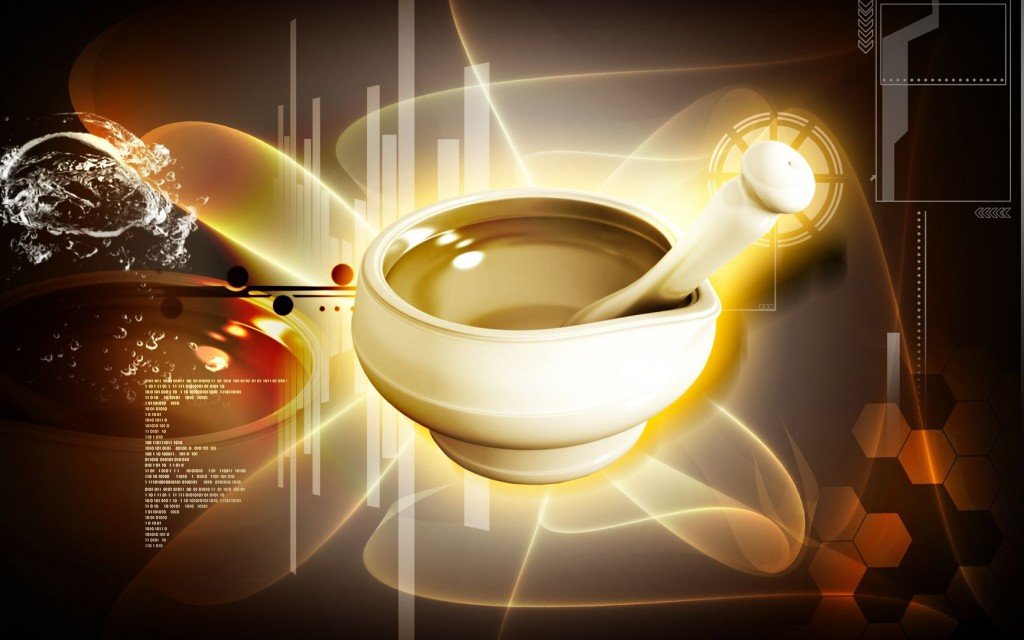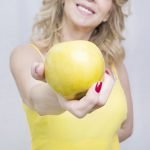Virender Sodhi, MD (Ayurved), ND
Ayurvedic medicine has delineated rejuvenation and virilification as a branch of medicine where the main objectives are to maintain health as age advances and to keep the sexual organs healthy, avoiding the transfer of diseases to our offspring. Rejuvenation therapy is 1 of 8 clinical specialties of Ayurveda called “rasayana.” The word is derived from the Sanskrit rasa, which means juice or essence, and ayana, which means path. Thus, the meaning of rasayana is “keep the essences of life flowing.” Anything ingested by the body is first resynthesized into essential sap, rasa dhatu, the basic plasma tissue. Ayana is the method by which rasa is carried to all the body tissues for biochemical metamorphosis (rasakriya). The concept of rasayana is based on these 2 principles of conservation and transmutation of energy. Rasa nourishes the body and stimulates the immune system. Rasayana is one of the most effective rejuvenation therapies of Ayurveda, which keeps the body young and agile and helps to promote health and longevity. Various rasayana are prescribed according to age, body type, organ, and diseases.
The 5 purposes of rasayana are as follows: (1) to prevent aging and impart longevity, (2) to impart immunity against diseases, (3) to improve mental faculties, (4) to add vitality and luster, and (5) to improve the quality of sperm and ovum to reproduce healthy offspring.
Panchakarma Treatments
Included in the classification of rasayana are the panchakarma treatments vatatapika and kuti praveshika. Vatatapika is the period when the patient is performing cleansing, detoxification, and rejuvenation. This is done as an outpatient. Kuti praveshika involves a special indoor regimen in which patients stay in a very dark room for many days. Patients consume a diet very low in calories, performing yoga and meditation. I have heard that in this treatment people slough off their skin, hair, and even loose bad teeth, but then all the systems start rejuvenation again. This can be a very scary experience for many persons, and if you lose confidence, you will not regenerate your body because you are not sending the right message and your intelligence is getting the wrong information.
Panchakarma treatments are detoxification processes that involve 5 major cleansing treatments. The purpose of this process is to stimulate the elimination of toxins from the body. It is divided into 3 phases of preparation for panchakarma, panchakarma main treatments, and post-panchakarma treatments.
Phase 1, Preparation for Panchakarma (Poorva Karma)
Herbal Oil Massages (Snehan)
According to different body types and pathology, various medicated massage oils are used. There are 108 energetic points on the body, which are called marma points. These points are very close to those used in acupressure or acupuncture. Two technicians usually work on the whole body, rubbing with a special technique and working on marma points and performing lymphatic drainage at the same time. The use of medicated oils involves a special delivery of herbal medicine very similar to transdermal delivery of drugs. Every cell in the body is lined with specialized fat. These fats provide important functions but also become warehouses of toxic deposits. Medicated oils bind onto these toxins and help mobilize them for elimination with hyperthermia and lymphatic drainage treatments.
Hyperthermia (Swedan)
Body temperature is raised with different techniques, for example dry heat, wet heat, sunlight, exercise, or application of local heat to the area. The most common method of raising body temperature is to subject the body to an herbal steam sauna, where the herbs are boiling. Most of these herbs have aromatic and mood-balancing effects. The body temperature is raised, usually up to 100 to 104°F, depending on what type of condition we are treating. Series of medicated oil massages and hyperthermia treatments are performed to mobilize toxins. In our clinic, we usually do at least 10 series of these treatments to help mobilize toxins. After these treatments, the body is ready for the next phase of detoxification.
Phase 2, Panchakarma Main Treatments
Fasting (Upvas)
Fasting is done on vegetable and fruit smoothies, herbal teas, broth from vegetables, meat soups, and fish soups, depending on the pathology and condition of the patient. I usually fast my patients for 2 to 3 days or longer on this modified fast. Traditionally, vomiting is induced by taking herbs that have emetic effects. I have replaced this treatment with fasting. During fasting, in the absence of food intake, the body starts to burn “stored fat reserves” for energy. When the fat reserves are used for energy, toxins from the fats are released into the system. These toxins then are eliminated through the major organs of elimination such as the liver, skin, lungs, colon, kidneys, and lymph glands. The immune system of the body becomes active. Low caloric intake stimulates preservative genes and starves off bad cells.
Purging (Virechan)
A purge is given with castor oil or other Ayurvedic herbs mixed with juices and ginger, turmeric, mint, and so forth. Usually, the patients will have around 3 to 8 loose bowel movements, like diarrhea. A good purge is considered complete when at the end only clear liquid is coming out. Patients are cautioned to drink lots of fluids, broth, and herbal teas, and special attention is paid not to get dehydrated. Purging is the most helpful way of offloading the toxins from the liver, spleen, and gallbladder.
After fasting and purging, another series of herbal oil massage and sauna is performed to mobilize toxins to the colon. Now our focus is the large intestine.
Medicated Enemas (Basti)
Medicated enemas are done to cleanse the large intestine. The large intestine has the largest absorption area and at the same time is the warehouse of colonic bacteria. It is a place where the bacteria help our bodies make vitamin B12 and aid in manufacturing cancer-protective factors. We have more than 500 species of bacteria housed in our body. The average human has 33 to 100 trillion cells in the body, and the number of these bacteria is 10 times the number of cells in the body. You can imagine the role they have in our health. Lately, a lot of research has been published on the role of these bacteria and diseases. Most modern-day diseases such as diabetes, obesity, Crohn disease, ulcerative colitis, cancer, and Parkinson disease are linked with colonic bacteria. Microbiota transplantation has shown some very interesting results. If the large intestine is not clean and healthy, it is not performing its job very well.
Basti are of 2 kinds. Cleansing basti (niruh basti) cleanse the intestine, followed by restorative basti (asthapan) to restore the function of the large intestine.
In cleansing basti, an enema is done with cleansing herbs. These are usually a mixture of triphala, haritaki, honey, salt, or Epsom salts to stimulate the large intestine to release its toxic load.
Restorative basti is done to replenish the microflora in the intestine, which may have been eroded because of the cleansing herbs. In this process, yogurt culture, probiotics, ghee, sesame oil, coconut oil, and herbs like ashwagandha, Centella asiatica, triphala, and many more are used. It is interesting that colonic bacteria use butyric acid, propionic acid, and medium-chain triglycerides for food. The food for the bacteria is provided by ghee (butyric acid), sesame oil (propionic acid), and coconut oil (medium-chain triglycerides).
These basti treatments are done in series of 4, 8, 16, or 32. You always start with a cleansing enema and finish with 2 restorative enemas.
Nasal Treatment (Nasya)
Nasya treatment is usually performed along with the massage and sauna. The sinuses are heated with wet or steam heat, and a special massage is done to aid in lymphatic drainage, and then a few drops of specialized herbal oils are instilled into the nostrils. With heat treatment, the sinuses are expanding and are enabled to drain more easily. The oil has a cleansing action that helps drainage and cleans the sinus mucous membranes and nasal passages. The oil also makes a thin coating on the mucous membranes. The nervous system is situated right at the nose and is very reactive. The oil helps to provide a barrier between the nasal mucous membranes and pollens, dust mites, dust, and any foreign substances that come in contact with the nose. The treatment helps to promote the natural functions of the nose to smell and to sense.
Bloodletting (Raktmokshan)
The last treatment of panchakarma cleansing is bloodletting, which has been performed using different methods in Ayurvedic medicine by puncturing various veins. Also, localized bloodletting is done with leeches or cupping, followed by lancing, for patients who have arthritis or gangrene or for patients who have a putative process set in their body like carbuncles or boils. I have used leeches to treat a diabetic carbuncle, with great success. On the second day of treatment, the carbuncle was almost normal, and 4 days later it was completely healed. For bloodletting, I usually recommend people to donate blood at blood banks. Statistically, it has been shown that people who donate blood on a regular basis live longer. Regular blood donation increases insulin sensitivity and lowers ferritin levels, which in turn provides protection from various diseases; this may be due to the slowing down of free radical damage.
Phase 3, Post-Panchakarma Treatments (Pashchtya Karma)
Rasayana herbs are selected according to a person’s age (vya), constitution (prakriti), adaptability (satmya), body tissues (dhatus), microcirculation (srotas), digestion and metabolism (agni), and vitality (ojus). In the post-panchakarma sessions, restorative and adaptogenic herbs are given to restore and maintain optimal body functions. There are many different herbs used for various diseases. Some examples are the following: Terminalia arjuna for heart diseases, pippli for the digestive system, guggal and haritaki for obesity, garlic for hypertension, turmeric for allergies, ashwagandha and Mucuna pruriens for male hormonal balancing and sitawari for female hormonal balancing, and garlic, guggal, and Boswellia for neuromuscular conditions. In addition, triphala, sitawari, and Glycyrrhiza are used for eye diseases, as well as shilajit, amla, and haritaki for diabetes. Brain tonic (medya rasayan) herbs include Centella asiatica, Bacopa monnieri, Tinospora cordifolia, licorice, and ashwagandha. Ginger, Sida cordifolia, ashwagandha, and shankhpushpi (Convolvulus pluricaulis) are rasayana for vata body type, and amla and sitawari are for pitta constitution. Garlic, guggal, and pippli are rasayana for people of kapha constitution.
Rasayana for Mental and Emotional Balancing (Achar Rasayana)
The 5 senses are sensors for sending and receiving information to and from the universe and create their own programming, depending on our experiences, genetics, and body type. The body itself is a full-fledged pharmacy, producing all the chemicals, enzymes, neurotransmitters, and much more on demand. The following code of ethics keeps the programming of our bodies in alignment with our innate intelligence:
- Have a firm belief in a supreme power (God).
- Respect oneself, life, the elderly, and the environment.
- Always speak the truth.
- Avoid anger.
- Consume very limited quantities of alcohol.
- Do not use intoxicants.
- Do not indulge in lustful sexual activity.
- Learn how to balance your work, exercise, and other choirs.
- Obtain a balanced amount of sleep, not too much and not too little.
- Eat only nutritious food.
- Do yoga, meditation, and scripture study to enhance knowledge.
Daily Routine (Dincharya)
In planning a daily routine, one should address the following 9 considerations:
- Wake up early in the morning before sunrise. Sunlight activates the pineal gland to send massages to the pituitary gland, which in turn messages the adrenal glands to release cortisol, which wakes us up from deep sleep.
- Drink 1 to 3 glasses of warm water as you wake up. This helps peristalsis to begin and aids in bowel evacuation.
- Oral hygiene is of utmost importance for healthy gums, digestive health, and a healthy heart. Shower every day with cold water to stimulate your immune system or finish with a cold shower.
- Get in touch with your senses by massaging your body with oil customized for your body type. To sharpen your sense of smell, put a few drops in your nose, and wash your eyes with triphala water (to make triphala water, open 1 capsule in ½ cup of distilled water, and filter the solution after dissolving with a coffee filter; you can also use eyecups available at the drugstores). Similarly, put a couple of drops of olive oil in your ear; you can also dip a cotton swab in olive oil and lubricate your ears. Massage a few drops of ghee or coconut oil or olive oil in your neck area, and perform lymphatic drainage. Most people have very tender temperomandibular joints; massage along the lines of the masseter muscle, and try to release the tension.
- Walk for 30 to 45 minutes, depending on your schedule, and perform yoga and meditate regularly. If you cannot do a full series of yoga, just do 5 to 10 repetitions of sun salutations (surya namaskar). Excessive exercise has been condemned in Ayurvedic medicine. Ayurveda prescribes the rule of ardha balam, meaning half the capacity. You should not force your body in an extreme exercise program. Extreme exercise generates more free radical damage and more wear and tear on the body, leading to chronic diseases. Talk to any professional football or basketball player or any extreme player, and see how they are doing after age 40 years. By age 50 years, they all have very bad knees and even more diseases than ordinary people. In veteran extreme endurance athletes, recurrent myocardial injury and repair may eventually result in patchy myocardial fibrosis, leading to atrial and ventricular arrhythmias. Chronic, excessive, sustained, high-intensity endurance exercise may be associated with diastolic dysfunction, large-artery wall stiffening, coronary artery calcification, and cancer.
- Eat healthy nutritious foods according to your constitution or imbalance. Fried, processed, and artificially sweetened foods should be avoided at all times. According to Ayurveda, one should eat two-thirds of the capacity of the stomach. Interestingly, all the research shows that cutting calories to 60% to 70% of the total food intake reverses many diseases and delays the aging process. Caloric restriction elicits coordinated and adaptive stress responses at the cellular and whole-organism level by modulating epigenetic mechanisms (eg, DNA methylation and posttranslational histone modifications), signaling pathways that regulate cell growth and aging such as p53, target of rapamycine protein kinase, adenosine monophosphate–activated protein kinase, forkhead box O transcription factor, and cell-to-cell signaling molecules (eg, adiponectin). The overall effect of these adaptive stress responses is increased resistance to subsequent stress, delaying age-related changes and promoting longevity. Caloric restriction could delay many diseases associated with aging, including cancer, diabetes, atherosclerosis, cardiovascular disease, and neurodegenerative diseases.
- Sexual activity is considered sacred in Ayurveda simply because it is the sole reason for our existence in the universe. Ayurveda advises to have frequent sexual activity in winter and at intervals of 3 to 4 days during other seasons. Masturbation or other unnatural sexual acts are condemned because these set a wrong programming. In my clinical experience, people who are used to masturbation have unhappy partners because they may not satisfy their partner in achieving orgasms to the fullest.
- Finish your day with calming your mind by mediating, exercising pranayama (breathing exercises), and quieting your thoughts. Shut off all the stimuli from computers, cell phones, and television. These will interfere with achieving deep restful sleep.
Seasonal Routine (Ritu Charya)
Use a commonsense approach to the seasons. During the summer, dress lightly, eat fruits and vegetables, and drink lots of fluids to prevent dehydration. During the winter, dress warmly; keep your vital organs such as the heart and lungs warm. Add more nuts and seeds to get extra oils and energy for the winter, and lubricate your skin with oils. In the spring, dress not too lightly or too heavily. It is the season for allergies, so avoid mucus-producing foods like excessive sugar, dairy products, and fried and heavy foods. Also, fasting on vegetables, fruits, and light proteins can be very helpful in the spring. The fall season is considered best for cleansing the whole body.
In general, consume a low-calorie daily diet consisting of 7 to 8 servings of vegetables, 2 to 3 servings of beans, 2 fruits per day, and 1 to 2 handfuls of nuts and seeds per day, and keep animal protein consumption to a very minimum. Adding different rasayana according to age, pathology, and season will ward off diseases, and you will lead a fulfilling life.
Conclusion
As you can see, rasayana consist not only of specific herbomineral preparations but also represent a way of life in how you think and apply specific knowledge in your daily life. In our clinic, we have been able to apply these principles and have achieved remarkable results. Two years ago, a 60-year-old woman came to the clinic with a diagnosis of metastatic cancer to the liver and lungs. She had a history of breast cancer in 1998 and had been treated with mastectomy, chemotherapy, and radiation therapy. The following year, she developed cancer in other breast, and again the same treatment was followed. She was cancer free for almost 10 years. In 2008, she developed cancer in the colon, which was resected, followed by chemotherapy again. She was in remission for 1 year, and again in 2010 metastases were found in the liver and lungs, and her tumor markers were high. At this stage, she consulted our clinic and was put on a series of panchakarma treatments. She started to stabilize, and her liver and lung metastases began to decrease. After 2 years, all of her cancer is gone. A computed tomography image was negative, and her tumor markers are normal. We have many patients with chronic diseases that not only reversed, but they are now living disease free into their 70s and 80s.
 Dr Virender Sodhi was born in Himachal Pradesh, India. From an early age, Dr Sodhi knew that he wanted to be a physician and would go to the village physician feigning illness to procure remedies that he could take home and put into his “doctor’s kit.” This passion for healing led him to receive an MD degree in Ayurveda from Dayanand Ayurvedic College in Jalandhar, India, in 1980; he came to the West in 1986 to share Ayurveda as part of a cultural exchange program. In 1988, he graduated from Bastyr University with an ND degree, becoming the first Ayurvedic ND in the United States. Dr Sodhi treats thousands of patients from the United States and around the world. He lectures extensively throughout the United States and other countries, including New Zealand and Australia, and conducts classes and seminars in Ayurvedic medicine. He also writes regularly about the latest Ayurvedic science updates and has been featured in the Townsend Letter, NDNR, and many other publications. Recently, he was appointed as an official adviser on Ayurveda to the government of Australia. Dr Sodhi is chief executive officer of Ayush Herbs Inc and brings a fervent passion for the wisdom of Ayurveda to his practice and his personal life. It is that passion that drives him to continually develop new formulations using the latest research and technology available. In his free time, Dr Sodhi is avid about his regular workouts, loves to be with his family, and enjoys cooking and outdoor activities, such as hiking, boating, and picnicking. He is a deeply committed member of his church and community.
Dr Virender Sodhi was born in Himachal Pradesh, India. From an early age, Dr Sodhi knew that he wanted to be a physician and would go to the village physician feigning illness to procure remedies that he could take home and put into his “doctor’s kit.” This passion for healing led him to receive an MD degree in Ayurveda from Dayanand Ayurvedic College in Jalandhar, India, in 1980; he came to the West in 1986 to share Ayurveda as part of a cultural exchange program. In 1988, he graduated from Bastyr University with an ND degree, becoming the first Ayurvedic ND in the United States. Dr Sodhi treats thousands of patients from the United States and around the world. He lectures extensively throughout the United States and other countries, including New Zealand and Australia, and conducts classes and seminars in Ayurvedic medicine. He also writes regularly about the latest Ayurvedic science updates and has been featured in the Townsend Letter, NDNR, and many other publications. Recently, he was appointed as an official adviser on Ayurveda to the government of Australia. Dr Sodhi is chief executive officer of Ayush Herbs Inc and brings a fervent passion for the wisdom of Ayurveda to his practice and his personal life. It is that passion that drives him to continually develop new formulations using the latest research and technology available. In his free time, Dr Sodhi is avid about his regular workouts, loves to be with his family, and enjoys cooking and outdoor activities, such as hiking, boating, and picnicking. He is a deeply committed member of his church and community.





